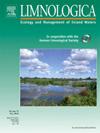Suitability of wild decapods from an alluvial valley in South America for human nutrition as derived by amino acid composition
IF 2
4区 环境科学与生态学
Q2 LIMNOLOGY
引用次数: 0
Abstract
Decapods are abundant in freshwater environments of tropical and subtropical rivers and could be considered a good resource for human feeding. The present study evaluated the nutritional quality of decapods in relation to amino acid (AA) composition and compared them with human requirements, and with the AA patterns of some crustaceans and fishes commonly consumed by human people around the world. Prawn and crab (Macrobrachium borellii and Aegla uruguayana, respectively) from the Parana River Basin were sampled. Catch effort and volume were also calculated according to the sampled area. AA was determined by high-performance liquid chromatography. Sixteen AA were identified in muscle; eight were essential amino acids for humans (EAA), and the others were non-essential amino acids (NEAA). Of the total AA, 38.0 % of those from M. borellii and 39.8 % from A. uruguayana were EAA. The NEAA values were 62.0 % for M. borellii and 60.2 % for A. uruguayana. Lipid content was close to 1 % of the biomass in wet weight in both species. When comparing decapod AA profiles with those from marine and freshwater crustacean and fishes used as food (giant river prawn, amazon river prawn, longarm river prawn, southern king crab, green tiger shrimp, speckled shrimp, tuna, sardine, hake, carp, trout, jundía catfish), the values of Leucine and Lysine in the decapods were found to be higher or equal. The amount of tyrosine in M. borellii and A. uruguayana was higher than in freshwater fishes. Nutritionally, both species are good quality food and could serve as a functional resource for the feeding of humans, nevertheless, they are not yet marketed.
南美冲积河谷野生十足类动物的氨基酸组成对人类营养的适用性
十足类动物在热带和亚热带河流的淡水环境中分布丰富,是一种可供人类食用的良好资源。本研究从氨基酸组成方面评价了十足类动物的营养品质,并将其与人类需要量进行了比较,并与世界上一些人类常食用的甲壳类动物和鱼类的氨基酸模式进行了比较。选取了巴拉那河流域的对虾和蟹(分别为borellimacrobrachium borellii和乌拉圭大虾)。并根据采样面积计算捕获力度和体积。AA采用高效液相色谱法测定。在肌肉中鉴定出16个AA;8种为人体必需氨基酸(EAA),其余为非必需氨基酸(NEAA)。其中,博雷氏田鼠和乌拉圭田鼠分别为38.0 %和39.8 %。NEAA值分别为62.0 %和60.2 %。脂质含量接近1 %的生物量湿重。将十足类动物与海洋和淡水甲壳类动物及食用鱼类(河对虾、亚马逊河对虾、长臂河对虾、南帝王蟹、绿虎虾、斑点虾、金枪鱼、沙丁鱼、鳕鱼、鲤鱼、鳟鱼、jundía鲶鱼)的AA谱进行比较,发现十足类动物的亮氨酸和赖氨酸值较高或相等。白颡鱼和乌拉圭颡鱼的酪氨酸含量高于淡水鱼。从营养上讲,这两个品种都是优质食品,可以作为人类食用的功能性资源,然而,它们尚未上市。
本文章由计算机程序翻译,如有差异,请以英文原文为准。
求助全文
约1分钟内获得全文
求助全文
来源期刊

Limnologica
环境科学-湖沼学
CiteScore
3.70
自引率
5.90%
发文量
64
审稿时长
3 months
期刊介绍:
Limnologica is a primary journal for limnologists, aquatic ecologists, freshwater biologists, restoration ecologists and ecotoxicologists working with freshwater habitats.
 求助内容:
求助内容: 应助结果提醒方式:
应助结果提醒方式:


